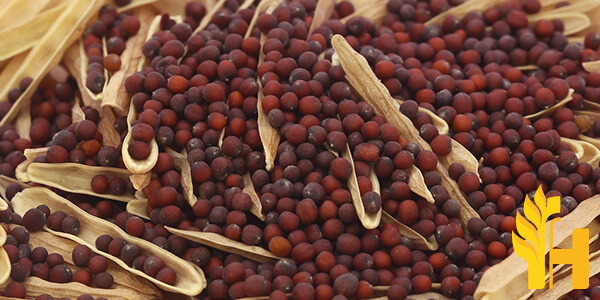Mustard Seed price

Where to buy and sell Mustard Seed, lowest (cheapest) and highest price.
check offers buy sell Mustard SeedToday price for Mustard SeedMustard Seed wholesale prices 2022
The Current commodity price of Mustard Seed per kg, pound in the world in the global markets
Mustard Seed agricultural Statistics
Mustard Seed
Mustard seeds, both white and brown, are nearly globular in shape, finely pitted, odorless when whole, and pungent-tasting. White mustard seeds are light yellow and about 2.5 mm (0.1 inch) in diameter. Brown mustard seeds are about the same size but are a darker yellow. Being a member of the Brassicaceae family, white and brown mustard seeds are edible and pungent-tasting after they have been prepared for eating. The whole seeds add texture to pickles such as hotdog or hamburger (with malt vinegar) when used whole; when ground into powder it is the main ingredient in dry and wet curry powders. Yellow mustard made from brown seeds is high in calcium. The ground powder of the yellow or white seeds is used as a condiment or food preservative. While whole seeds are preferred for dishes requiring their texture, the ground mustard powder has limited use in Western cuisine. White mustard seeds are known as "rai" or "kharai" in the Indian subcontinent, used by people of all demographics all across India and Sri Lanka, where they are eaten whole or cooked with lentils. The seeds are typically dry roasted until pungent (they emit some heat when chewed) and then blended into a powder that is typically added to the final dish just before serving because it loses its flavor when cooked. The seeds can also be crushed or powdered coarsely and mixed with water to form a paste which is fried in oil or ghee before adding it to food. The resulting dish has been known as "kadhi". Ground and prepared mustard is also available as a paste, which can be stored long-term in the refrigerator. The seeds may be soaked before planting to increase germination rates if they are slow; this also intensifies the pungency of the resulting plants. Mustard seed sprouts (pictured) are used as a vegetable in Japan and China, where the heat of pungency is less desired. Mustard seed, both white and brown, is nearly globular in shape. The seeds are finely pitted and odorless when whole and pungent-tasting. Mustard seeds come in a variety of colors: yellow (also known as "yellow mustard"), brown (known as "brown mustard"), black (known as "black mustard"), and green (known as "Persian cress" or "leaf mustard"). The whole seeds are used in pickling or made into prepared mustards for use on meats, salads, etc.Global mustard seed production
Mustard seed is a popular spice in many cuisines and is used in both whole and powdered forms. The mustard plant is a member of the cruciferous family, which also includes broccoli, cabbage, and radishes. The seeds are encased in a hard shell that must be cracked open before they can be used. Mustard seed is produced in many parts of the world, but the majority of the crop comes from Canada, India, and the United States. In the United States, most of the mustard seed grown is used to make prepared mustard, while in Canada the crop is split between mustard seed oil and prepared mustard. India is the largest producer of mustard seed, and the crop is used predominantly in India to make mustard oil. The production of mustard seed is a relatively simple process. The seeds are harvested from the mustard plant and then cleaned and dried. Once they are dry, the seeds can be either crushed or ground into a powder. Mustard powder is a common ingredient in many spice blends, such as curry powder. Mustard seeds are high in oil content, and the majority of the crop is used to produce mustard oil. Mustard oil has a strong flavor and is used as a cooking oil in many parts of the world, particularly in India. The oil is also used in some cosmetics and hair care products.Download our new
Husfarm App
Stay up to date with the current prieces of agricultural products all over the world.
Do you want to sell agricultural products?
Are you an Agricultural processor looking for high-quality products to buy?
Post an ad for FREE!
